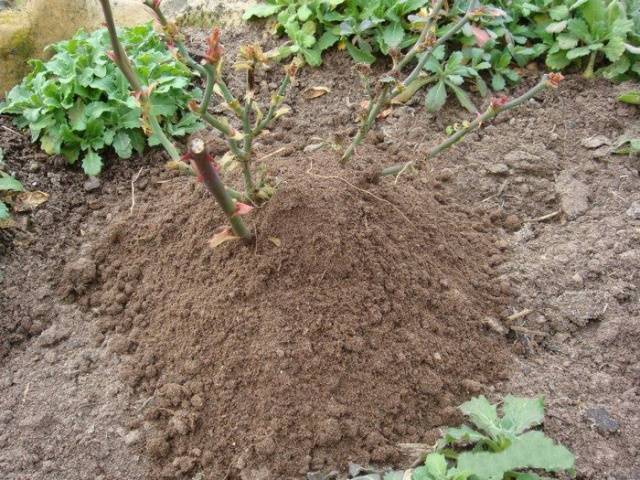Content
It’s not for nothing that roses are called “queens of flowers” - almost any variety of roses, with good care, can win the heart of a gardener during flowering. Climbing roses are able to elevate their beauty to unattainable heights. With their help, you can create magnificent vertical compositions that will simultaneously decorate the area and create unique comfort and saving shade during the summer heat. But unfortunately, the climate in most regions of Russia does not allow this luxurious flower to maintain its decorative value all year round. With other types of roses, there are usually not many problems with wintering - most of them can simply be pruned short with the onset of cold weather, and then sheltering for the winter will not be at all difficult.
Therefore, covering climbing roses for the winter is a whole science, neglecting the rules of which can lead to a decrease in decorativeness, or even to the complete death of the rose bush.
Preliminary preparation for winter
Experienced gardeners have no doubt that no matter what the winter is like (frosty, little snow, with a lot of thaws), strong, healthy, hardened and well-ripened rose bushes will best endure any adverse conditions. But if the question arises about whether to cover climbing roses or not, then only in the very south of Russia can they be allowed to overwinter without shelter. In all other regions, it is impossible to do without special procedures for protecting rose bushes for the winter.
Help the shoots ripen
Typically, flower growers properly and well care for their pets during their rapid flowering and try to prolong care behind the bushes until frost. This is where the first danger awaits beginners in floriculture. From the beginning of August, when the roses are in full bloom, they completely stop feeding the bushes with fertilizers that contain nitrogen.
This is done in order to stop the development of new shoots, which will no longer have time to ripen well by winter and will have to be cut off in any case. But during this period, rose bushes vitally need feeding of the following composition:
- 25 g superphosphate;
- 10 g of potassium sulfate;
- 2.5 g boric acid.
Nutrients are dissolved in 10 liters of water and the rose bushes are watered with the resulting solution. This amount should be enough for about 4-5 square meters. meters of landings.
After a month, it is necessary to repeat feeding, using 16 grams of potassium monophosphate per 10 liters of water.
It is only necessary to strictly ensure that the fertilizer does not contain nitrogen.It is even more effective to dilute the nutrient solution three times and spray the rose bushes with the resulting mixture.
Another important technique on how to properly prepare climbing roses for wintering is to completely stop forming and pruning plants, starting at the end of August. It is also advisable not to loosen, much less dig up, the soil between the bushes, so as not to bring to life the dormant rose buds located at ground level.
Timing of shelter for the winter
Quite often, beginners rush to cover the climbing rose early and believe that even slight frosts can seriously damage their pets. In fact, rose bushes of old varieties are quite frost-resistant and can withstand even temperatures down to -10°C and below.
But small frosts down to -3°-5°C, as a rule, are not terrible for roses, but only harden the plants and prepare them for the winter period. Therefore, there is no need to rush to cover the rose bushes. It is advisable to begin building shelters and laying bushes no earlier than early to mid-October. Although for different regions of Russia the timing may vary and you need to focus on the onset of persistently cold weather with an average daily temperature below -5°C.
But it is better to start carrying out other preparatory work, which will be discussed below, in mid-September or even earlier, when the first frosts begin.
Cleaning up debris and strengthening the immune system
Especially carefully in September it is necessary to clear all the space under each rose bush from weed and all kinds of plant debris: fallen leaves, flowers, dry grass.It is in such places that spores of various fungal diseases and pest larvae prefer to hide.
To increase the resistance of rose bushes to diseases caused by high humidity, it is advisable to spray the bushes with some kind of fungicide. The most common remedies are iron sulfate or Bordeaux mixture.
After the first treatment with fungicides, climbing roses begin to be removed from their supports and bent to the ground. To prevent this procedure from being too painful for both the roses and the grower (due to the thorns), when gartering them in the spring, you need to provide for it and make sure that the lashes can be removed easily. If the bush of climbing roses is very old and large, then you need to remove the lashes very gradually, not at once, but even in this case it is sometimes impossible to do this. In such a situation, it is possible to insulate rose vines using several layers of dense non-woven material or coarse fabric, such as burlap.
Bending down the roses after being freed from the supports is demonstrated in detail in the following video:
Pruning and hilling
Pruning is a very important part of preparing rose bushes for winter. But climbing roses have several important features of its implementation.
- Firstly, only the youngest immature green shoots from the top of the bush are pruned when the lashes are removed from the supports.
- Secondly, be sure to cut off all the flowers and buds on the bush just before the shelter.
- Thirdly, they wait for the period of light frosts, which should contribute to the falling of leaves.If the leaves of the roses have not fallen, then they must be trimmed, especially in the lower part of the bush along with cuttings and small branches. They become habitats for various pathogens and pests.
Sometimes removing leaves turns into a difficult operation due to the abundance of shoots with thorns. Then gardeners use special preparations to spray the leaves - it is better to use those that belong to the sulfur group.
If we talk about how to cover climbing roses, then in any case you need to start with hilling the root collar. This technique is necessary for roses of any variety and allows you to save the life of the rose bush even in the most unfavorable weather conditions in winter.
It is best to use ordinary soil from the rows for hilling. It is only necessary that it be completely dry, so it is better to prepare it in advance and store it somewhere under a canopy. For one young rose bush, one bucket of soil is enough; old powerful plants will need 2-3 buckets, which are poured directly into the center of the bush in the form of a cone. Instead of soil, you can also use dry sand, but it is advisable not to use peat, humus or sawdust, as they absorb moisture too well. On average, 20-30 cm of hilling height is enough for one rose bush.
Shelters for climbing roses
When looking for an answer to the question: “How to cover climbing roses for the winter?” First of all, you need to understand how your bushes are located. If they are arranged in one line, then it is optimal to choose a shield method of shelter. In the case of a group arrangement, you can build a frame over the entire rose garden.If rose bushes are located separately, then you need to focus on the climatic conditions of your region. If your winters are moderately frosty and there is a lot of snow, then high hilling with spruce branches on top will be sufficient. Otherwise, it is advisable to build at least a small frame with an air gap.
Shields for roses
Trimmed and removed from the supports, the rose bush is carefully tied in the form of a bundle and bent as far as possible to the ground, on which the spruce branches are previously placed. The branches of the lashes must be pinned to the ground in several places with solid wire. Now you need to find or build two wooden shields from scrap materials, about 80 cm wide and a length equal to the length of the pink row. The shields are placed along the rose bushes like a house and reinforced with pegs on the outside.
The shields are covered on top with a piece of polyethylene so that it is able to cover the shelter at both ends. The film is covered with earth and secured to the panels with strips. Until severe frosts arrive (below -10°C), the film on the ends can be kept slightly open, but with the onset of cold weather, the ends must also be carefully sealed. In the spring, during thaws, the film at the ends can be slightly opened to prevent the roses from drying out.
Frame shelters
In all other cases of arrangement of rose bushes, except for ordinary ones, homemade frames are used, which can be made from either wire or wooden slats.
The branches of rose bushes are fixed to additional supports inside the shelter using a rope so that they do not come into contact with the frame. In these cases, the best covering for the frame would be fiberglass - it does not allow moisture to pass through, but is well ventilated. If it is not available, you can use dense non-woven material, combining it in the upper part with polyethylene to protect against precipitation.
Any winter shelter for roses is not removed immediately, but gradually opening its individual parts for ventilation. It is advisable to disassemble shelters in cloudy weather to minimize sunburn.
Conclusion
Of course, there is plenty of hassle with wintering climbing roses, but true connoisseurs of beauty are not afraid of difficulties and therefore are rewarded for their efforts with the delightful appearance and wonderful aroma of roses in the warm season.



















